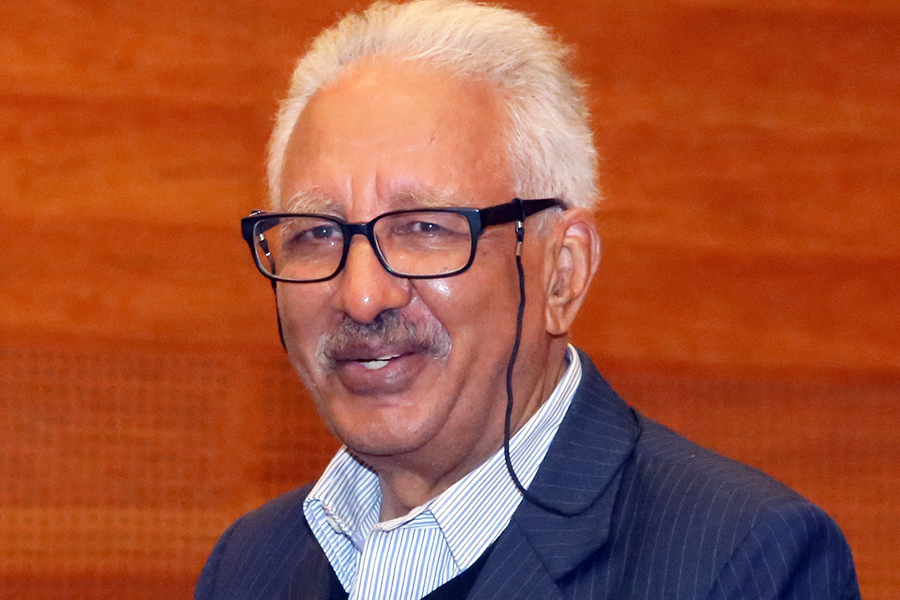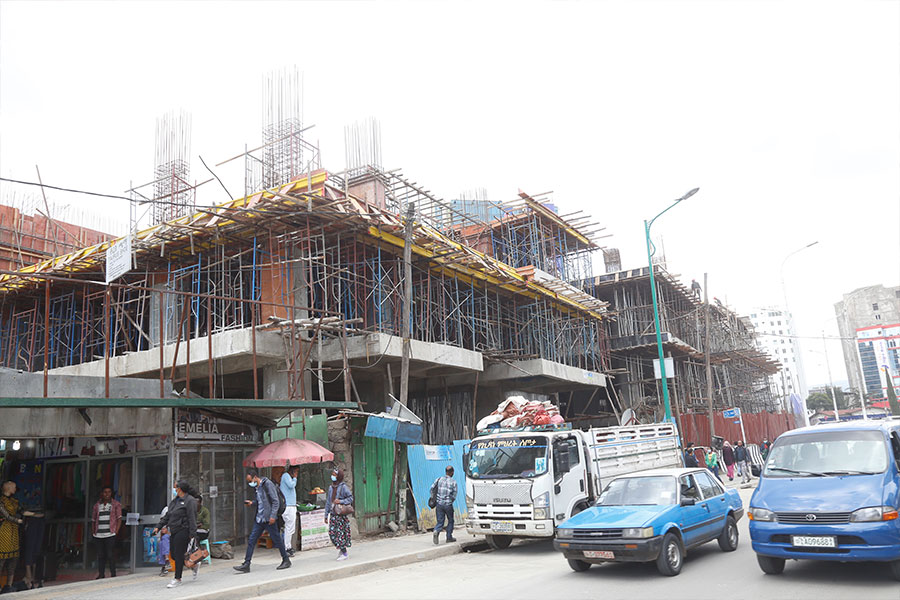
Commentaries | May 29,2021
Jan 11 , 2020
By Gedion G. Jalata
The Ethio-Djibouti Railway corridor is the gateway to 95pc of the imports and exports into and from Ethiopia. Maximising the benefits of this corridor does not only require investments in logistics but a coherent legal and policy environment, writes Gedion G. Jalata (gediongam@gmail.com), CEO of Centre of Excellence International Consult (CEIC).
The economic cooperation between Ethiopia and China is found to be essential for both countries in various aspects, as it creates a larger investment milieu for the Chinese. It also benefits Ethiopia through job creation, efficient use of resources, technology and skills transfer, as well as improving the livelihoods of the people. Even though the relationship is not free of challenges, if properly harnessed, the opportunities brought by China can be a powerful force for economic development and have a great role to play in promoting inclusive and sustainable economic growth in Ethiopia.
One of the cruxes of this relationship has been the construction of the Addis Abeba-Djibouti Standard Gauge Railway. It plays a significant role in the development of the economy and is often regarded as a wheel of economic activity due to the crucial role it plays for production and distribution. Furthermore, the new railway has the potential to boost regional integration between the two countries through the enhancement of trade and social interaction.
Railway lines open up regions, hinterlands and rural areas by facilitating agricultural development, as well as the growth of small and large-scale industries. It also attracts residential, commercial, educational and recreational settlements and developments around its corridor. Due to the role it performs in the growth and development process, rail transport is seen as the mainframe around which an integrated national transportation system is built. Its capacity, which is further accentuated by its safety and security factors coupled with its ability to travel long distances with ease and lower unit costs, places it in good stead to serve as the hub of the transport system of any nation.
Rail transport has made varying degrees of impact on the development of the countries where it exists. Many studies described rail transport as historically the most powerful single initiators of economic takeoff, being the main force in the widening of markets and a prerequisite to expanding the export sector. They are staging a comeback around the world as governments are changing policies and strategies to address sustainable development goals.
The railway would also enhance the tourism sector as a cheaper and modern way of transport. It has the potential to serve as an economic belt by providing outlets to industrial products coming from different industrial parks such as Hawassa, Adama, Kilinto and Eastern as well as Jimma.
The Addis-Djibouti Railway has created a suitable transportation corridor for Ethiopia’s import-export sector, with 9 industrial parks out of 15 being situated along the railway line. The Addis-Djibouti Railway has also reduced the travel time for freight and passengers. For freight transport, it has reduced the journey time between Djibouti and the Ethiopian dry port of Modjo from 84 hours to 10 to 15 hours and reduced transport costs.
Additionally, the Addis-Djibouti Railway has contributed to the creation of jobs in both countries. During the construction, around 60,000 local jobs were created and 3,900 temporary jobs were created. The creation of jobs also resulted in many gaining skills to operate sophisticated railway machinery. Moreover, a gradual handover of the Railway's management staff training is ongoing in Ethiopia and several employees of the Ethiopian Railway Corporation had the opportunity to go to China to study railway engineering, train driving, as well as maintenance and repair at universities or technical schools.
It should also not be overlooked that the Railway also indirectly brought thousands of employment opportunities in areas such as retailing, short-distance freight transport, passenger transport, bulk cargo undertakings and real estate development. From 2015-2017, approximately 200,000tn of emergency provisions were transported through the Addis Abeba-Djibouti Railway for drought-stricken regions of the country.
However, the Railway is not bereft of challenges. These most prominent ones are lack of a sound legal system for railways, frequent power failure, insufficient facilities or equipment for the railway, limited funding for the sustainability of the railway, lack of clear understanding of the benefits of the railway and slow policy decisions on the management of finished linkage lines.
These challenges are all the more worthy of attention considering that the corridor linking Ethiopia to the Port of Djibouti is the main gateway for the country. Over 95pc of Ethiopia’s imports and exports travel through this corridor. An efficient railway network brings a whole host of economic benefits if the government addresses some of the challenges that currently hinder the expected performance of the Addis Abeba-Djibouti Railway.
Experience shows that railways can attract substantial private sector investment and that there are some common elements of successful experiences that Ethiopian can learn from. This can start by creating a policy and legal environment that protects the interests of different types of investors and key actors in the railway sector.
Investors perceive a number of risks to the railway sector because of the regulatory framework, corporate governance, management of the railway, policy inconsistency and implementation gap. This environment provides limited protection and creates uncertainties for private investors who would be particularly concerned about traffic routing and the interface with the rest of the network.
The government can mitigate these risks by creating a legal framework for railways that is clear, objective, reliable, compensatory and neutral between public and private suppliers of similar goods or services. This would be an efficient way to reduce private investors' risk levels and their cost of capital.
Moreover, the economies of Ethiopia and Djibouti depend on imports into and exports out of Ethiopia. These depend, in turn, on an efficient logistics system along the entire length of the Djibouti-Ethiopia transport and transit corridor. Both countries have made significant investments in trade and transport infrastructure, and the results of these investments are impressive.
However, high-quality rail infrastructure, while necessary, is not sufficient for achieving efficient logistics. If the benefits of the upgraded port, rail, road, and internal container depot infrastructure are to be fully realised, logistics systems must also be established that will allow users to maximise the facilities’ potential.
There are multiple stakeholders involved as service providers and providers of infrastructure along the corridor, but there is no sound mechanism to coordinate their activities. Unless there is coordination, there will be no improvement in transport and transit-service delivery. This will be especially hurtful as the railway contributes a lot to not only products coming from industrial parks in the country but also in helping to develop an economic belt along the Addis Abeba-Djibouti Railway corridor.
The successful integration of rail and development requires conscious decisions about trade-offs that rely on coherent, cross-sectoral planning. Ethiopia’s recent experiences demonstrate these aspirations and to achieve them there is a need to maintain flexibility, simplicity and pragmatic policy actions at any given time.
PUBLISHED ON
Jan 11,2020 [ VOL
20 , NO
1028]


Commentaries | May 29,2021

Commentaries | Sep 02,2023

Sunday with Eden | Feb 06,2021

My Opinion | Aug 12,2023

Fortune News | Sep 01,2024

Fortune News | Jul 13,2019

Commentaries | Oct 12,2024

Fortune News | Feb 25,2020

Radar | Oct 20,2024

Commentaries | Oct 23,2021

My Opinion | 131770 Views | Aug 14,2021

My Opinion | 128154 Views | Aug 21,2021

My Opinion | 126099 Views | Sep 10,2021

My Opinion | 123721 Views | Aug 07,2021

Dec 22 , 2024 . By TIZITA SHEWAFERAW
Charged with transforming colossal state-owned enterprises into modern and competitiv...

Aug 18 , 2024 . By AKSAH ITALO
Although predictable Yonas Zerihun's job in the ride-hailing service is not immune to...

Jul 28 , 2024 . By TIZITA SHEWAFERAW
Unhabitual, perhaps too many, Samuel Gebreyohannes, 38, used to occasionally enjoy a couple of beers at breakfast. However, he recently swit...

Jul 13 , 2024 . By AKSAH ITALO
Investors who rely on tractors, trucks, and field vehicles for commuting, transporting commodities, and f...

Jul 5 , 2025
Six years ago, Ethiopia was the darling of international liberal commentators. A year...

Jun 28 , 2025
Meseret Damtie, the assertive auditor general, has never been shy about naming names...

Jun 21 , 2025
A well-worn adage says, “Budget is not destiny, but it is direction.” Examining t...

Jun 14 , 2025
Yet again, the Horn of Africa is bracing for trouble. A region already frayed by wars...

Jul 6 , 2025 . By BEZAWIT HULUAGER
The federal legislature gave Prime Minister Abiy Ahmed (PhD) what he wanted: a 1.9 tr...

Jul 6 , 2025 . By YITBAREK GETACHEW
In a city rising skyward at breakneck speed, a reckoning has arrived. Authorities in...

Jul 6 , 2025 . By NAHOM AYELE
A landmark directive from the Ministry of Finance signals a paradigm shift in the cou...

Jul 6 , 2025 . By NAHOM AYELE
Awash Bank has announced plans to establish a dedicated investment banking subsidiary...